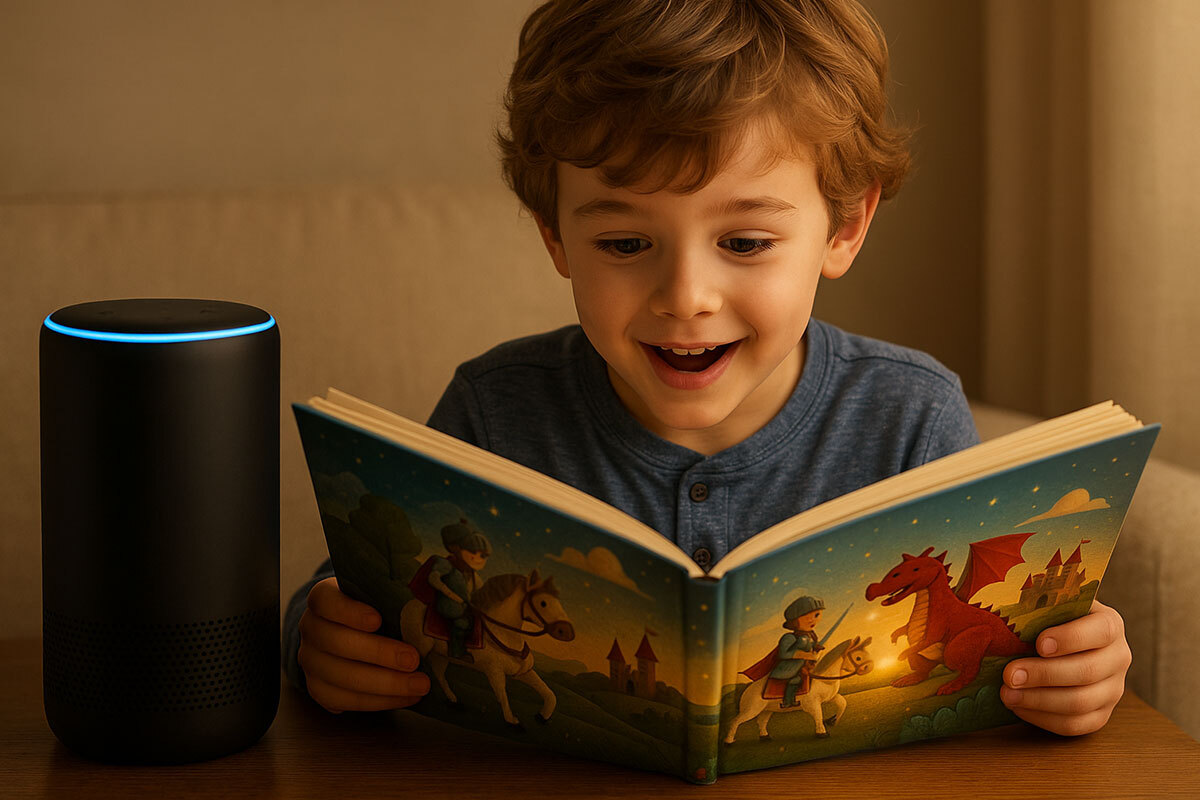How AI Voice Creators Can Bring Children’s Books to Life

Children’s books have long had a magical property — from gentle bedtime stories to colorful adventures that ignite the imagination. But in this increasingly digital world, the face of “reading” is shifting. Screens are taking the place of pages, voices are taking the place of silent reading, and children are interacting with stories in more active ways than ever before. Among the most promising innovations fueling this shift is the application of AI voice makers to animate children’s books.
Whether it’s a story about a dragon learning to share or a robot who ventures out to explore the galaxy, listening to characters talk in expressive, animated voices brings a whole new element of emotional depth and thrill to young readers. AI narration is no longer robotic, no longer flat — it’s dynamic, realistic, and many times unrecognizable from a human voice. With the aid of an AI voice creator, writers and publishers can create rich, varied character voices that actually speak to children, engaging them more deeply and inclusively in the story.
Why Voice Matters in Children’s Books
Voice is a key factor in the way children absorb and enjoy stories. It’s the distinction between a dry recitation and a lively performance. When a narrator shows joy, sadness, surprise, or excitement, young listeners not only get more out of the story but also form stronger emotional bonds with the characters.
Classic audiobooks have traditionally relied on professional voice actors, but that is constrained — it’s time-consuming, costly, and beyond the reach of independent authors or small presses. AI voice builders provide a highly attractive alternative that enables content developers to create professional-quality voiceovers on demand at lower financial and technical costs.
From Passive Reading to Interactive Listening
AI voice technology unlocks the potential for a more engaging reading experience. Rather than sitting idly and viewing pictures or reading words, kids can now hear richly voiced stories with distinct character voices, soundscapes, and even customized name insertions. Multi-character voice support is available on some AI platforms, allowing each character in a story to have a distinct voice — whether it’s a squeaky mouse or a booming pirate captain.
For kids who are visually impaired or learning disabled with dyslexia, voice narration is not a nicety — it’s a necessity. Hearing purposeful, engaging narration assists in enhancing language understanding, word identification, and auditory processing. And since AI voices can be adjusted in accent, tone, and pace, they can be adjusted to meet the specific requirements of each child.
Empowering Independent Writers and Small Publishers

Until now, it took access to a studio, voice artist, and production crew to convert a children’s book into an audiobook. That made entry too expensive, particularly for independent authors or teachers on tight budgets. AI voice technology is leveling the playing field.
With smart voice creation tools, writers are now able to upload their writing, select narration voices, and see the results immediately. Changes can be adjusted without costly reshoots, allowing for ease of testing outpacing, tone, or dialogue delivery. Such flexibility inspires creativity and innovation, allowing storytellers to realize their visions without compromise.
Personalization for Inclusivity
Kids are from different backgrounds, and they should be exposed to voices that resonate with their identities and cultures.AI voice designers enable narrations to be done in multiple dialects, accents, and even non-binary or gender-neutral tones. Such a degree of personalization was not easily obtainable before, with huge budgets and multicultural casting options.
Picture a child listening to a bedtime story being read in the voice of someone familiar, with a regional accent, or the voice of a character who sounds just like a member of their own family. Such small touches create connection and affirmation, adding to understanding, yes, but to a sense of belonging as well. As children’s media moves forward, diverse storytelling needs to be a priority — and AI voice tools are specifically well-suited to help facilitate this mission.
Promoting Language Learning and Literacy

Children’s books tend to form the basis for language acquisition. Through AI voice narration, students are able to listen to proper pronunciation, rhythm, and intonation, which is essential for early language learning. Translated or bilingual books can be immediately voiced in various languages, enabling children to become multilingual and more aware of the global world.
Furthermore, AI-powered narration can assist with reading fluency by aligning the sound of words with on-screen highlighted text — a process that has been shown to assist children in learning to connect sounds with written language. This approach is particularly well-suited for early childhood classrooms and ESL classrooms.
Conclusion
The confluence of technology and childhood learning is full of promise, and AI voice generators are making a valuable contribution in this arena. As the technology improves, we can look forward to even more realistic voices, more languages available, and wider accessibility for creators of all skill levels.
But the real magic is not in the technology itself — it’s in the stories. AI voice technology is merely opening new doors for those stories to be heard in richer, more immersive ways. Whether it’s a story of friendship in the woods, a space adventure, or a peaceful bedtime moment between parent and child, these richer experiences welcome kids into more intimate relationships with books.






